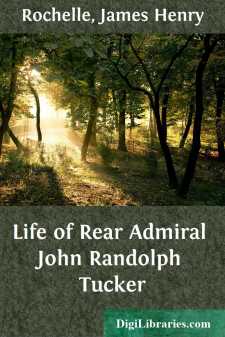Categories
- Antiques & Collectibles 13
- Architecture 36
- Art 48
- Bibles 22
- Biography & Autobiography 813
- Body, Mind & Spirit 142
- Business & Economics 28
- Children's Books 14
- Children's Fiction 11
- Computers 4
- Cooking 94
- Crafts & Hobbies 4
- Drama 346
- Education 46
- Family & Relationships 57
- Fiction 11829
- Games 19
- Gardening 17
- Health & Fitness 34
- History 1377
- House & Home 1
- Humor 147
- Juvenile Fiction 1873
- Juvenile Nonfiction 202
- Language Arts & Disciplines 88
- Law 16
- Literary Collections 686
- Literary Criticism 179
- Mathematics 13
- Medical 41
- Music 40
- Nature 179
- Non-Classifiable 1768
- Performing Arts 7
- Periodicals 1453
- Philosophy 64
- Photography 2
- Poetry 896
- Political Science 203
- Psychology 42
- Reference 154
- Religion 513
- Science 126
- Self-Help 84
- Social Science 81
- Sports & Recreation 34
- Study Aids 3
- Technology & Engineering 59
- Transportation 23
- Travel 463
- True Crime 29
Life of Rear Admiral John Randolph Tucker
Categories:
Description:
Excerpt
Life of Rear Admiral John Randolph Tucker
A SKETCH OF THE AUTHOR.
JAMES HENRY ROCHELLE, the author of the following pages, and the subject of this sketch, was of French-English and Celtic, or Scotch-Irish, extraction—English through his paternal great-grandmother, who was the daughter of Hinchia Gilliam, and his wife (née) Harrison; Scotch-Irish through his maternal ancestry. The name itself proclaims its French (Huguenot) origin.
It is well known that when Louis XIV revoked the edict of Nantes many French Protestants, called Huguenots, fled from their homes to escape persecutions worse than death. About forty thousand took refuge in England, and in 1690 William III sent a number of them to America. A party of them made their way up the James river and made a settlement, which they called Mannakintown, or "Manacan," because the lands formerly belonged to the Manacan Indians. Feeling that they no longer had to defend themselves against oppression and cruelty, and that in a free country their religion was no stigma, the characteristics of the race came out. With order and work Manacan became a flourishing town. Among those who had made a temporary home there was John Rochelle, who came with the other Huguenot exiles, and, if Pope be right, he soon enjoyed
"All the joys of sense—Health, peace and competence."
But in a few years the spirit of discord entered among these exiles, who had found peace, liberty and homes. The three Rochelle brothers sought other homes; William settled in North Carolina, James went to South Carolina, and John bought of William and Jonas Longbottom two hundred and twelve acres of land on the south side of the Nottoway river in the then parish of Albemarle. Here he lived, and married Mary Gilliam, daughter of Hinchia Gilliam and his wife (née) Harrison. They had issue four sons—John, Levi, Hinchia and Nathaniel. John, the oldest son, married his cousin, Judith Gilliam, famed for her beauty, and they became the parents of nine children—Benjamin, John, Willis, Clements, Elizabeth (who will live in history as the mother of the famous soldier, George Henry Thomas), James, Lucy, and Mary.
James was born in the year 1786. At an early age he entered the clerk's office of his county as deputy to the then clerk, Samuel Kello. In 1815 he was chosen clerk and held the office until his death.
On the 19th of April, 1817, he married Martha (Hines) Gray, widow of Dr. Henry Mills Gray. Many children were born unto them, but only three lived beyond the early years of infancy—John, Martha and James Henry.
James Henry Rochelle was born at his father's home, near the Courthouse, on the 1st day of November, 1826. His boyhood was passed in the refining influence of a Virginia home, of the period when Virginia was the garden spot of America, when her daughters were the "mothers of Presidents" and her sons were statesmen, "Sans peur et sans reproche."
On the 9th of September, 1841, he was appointed acting midshipman in the United States Navy; served six months at sea, and then received his warrant as midshipman....


